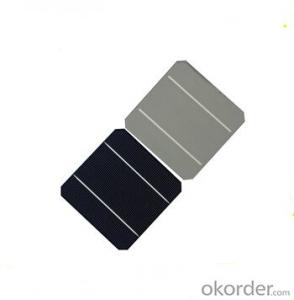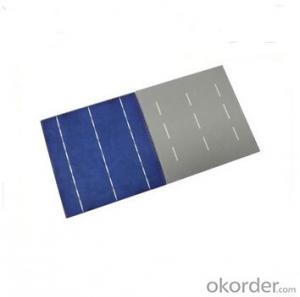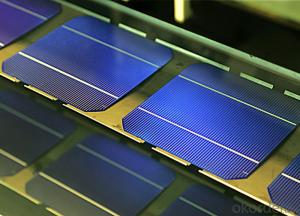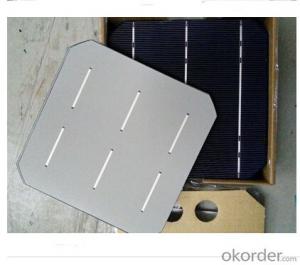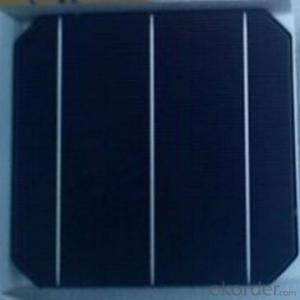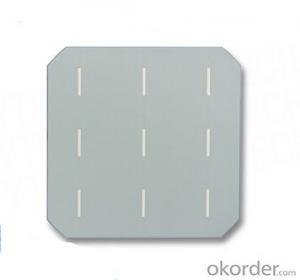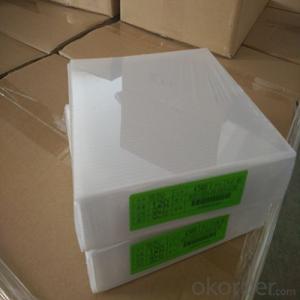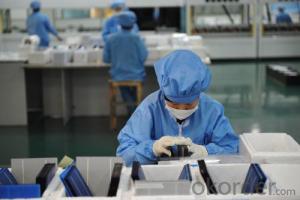Fraunhofer Solar Cells
Fraunhofer Solar Cells Related Searches
Except For Solar Cells Weegy Problems With Solar Cells High Power Solar Cells Light Trapping In Solar Cells High Performance Solar Cells High Output Solar Cells High Wattage Solar Cells Energy Transfer In Solar Cells High Efficiency Hvac Systems Recombination In Solar CellsHot Searches
Cheap Solar Cells For Sale Flexible Solar Cells For Sale Q Cells Solar Panels For Sale Printed Solar Cells For Sale Bulk Solar Cells For Sale 6x6 Solar Cells For Sale Broken Solar Cells For Sale Cpv Solar Cells For Sale Photoelectric Cells For Sale Price Of Silicon Solar Cells Price Of Solar Cells Over Time Buy Solar Cells From China Cheap Solar Cells China Best Type Of Solar Cells Flexible Solar Cells Price Q Cells Solar Panels Price 3 Types Of Solar Cells Production Of Solar Cells Common Types Of Solar Cells Q Cells Solar Panel PricesFraunhofer Solar Cells Supplier & Manufacturer from China
Okorder.com is a professional Fraunhofer Solar Cells supplier & manufacturer, offers integrated one-stop services including real-time quoting and online cargo tracking. We are funded by CNBM Group, a Fortune 500 enterprise and the largest Fraunhofer Solar Cells firm in China.Hot Products
FAQ
- Dust storms have a significant negative impact on solar cell efficiency. The accumulation of dust on the surface of solar panels reduces the amount of sunlight that can reach the cells, leading to a decrease in power generation. The dust particles block and scatter sunlight, reducing the overall efficiency of converting sunlight into electricity. Regular cleaning and maintenance of solar panels are necessary to mitigate the adverse effects of dust storms and ensure optimal performance.
- Solar cells contribute to reducing carbon emissions by converting sunlight into electricity without burning fossil fuels. As a clean and renewable energy source, solar cells help decrease the reliance on coal, oil, and gas power plants that emit greenhouse gases. By harnessing the sun's energy, they generate electricity with zero carbon emissions, thereby mitigating climate change and promoting a more sustainable future.
- Yes, solar cells can be used in public infrastructure projects. Solar cells, also known as solar panels, are an efficient and sustainable source of renewable energy. They can be integrated into various public infrastructure projects such as streetlights, bus stations, parking lots, and rooftops of public buildings, among others. By harnessing the power of the sun, solar cells can help reduce dependency on traditional energy sources, lower carbon emissions, and contribute to a more environmentally friendly and resilient public infrastructure.
- Yes, solar cells can be used in electric fence systems. Solar cells can generate electricity from sunlight and convert it into usable energy, which can power an electric fence system. This eliminates the need for traditional grid power or batteries, making it a cost-effective and environmentally friendly option.
- Yes, solar cells can be used to power manufacturing facilities. By installing a solar panel system, manufacturing facilities can generate renewable and clean energy to meet their power needs. This not only reduces their dependence on fossil fuels but also helps in reducing their carbon footprint and overall environmental impact.
- How can the solar power change our life by using solar cells material?
- One of the high-technology based car companies, Tesla, is planning to use solar power as the main car energy to power the car. That's how the solar energy is used in our life.
- Yes, solar cells can be used in airports. In fact, many airports around the world have already started using solar panels to generate clean and renewable energy. These solar cells are typically installed on rooftops, canopies, or open areas near the airport to harness sunlight and convert it into electricity. This helps airports reduce their carbon footprint, lower energy costs, and contribute towards sustainability goals.
- Partial shading can have a significant negative impact on solar cell performance. When a portion of the solar panel is shaded, the shaded cells produce less electricity, which can decrease the overall energy output of the system. This is due to the fact that shaded cells create a "bottleneck" effect, limiting the flow of current through the shaded area and affecting the entire series-connected cells. Additionally, partial shading can result in hotspots, leading to potential damage to the solar cells and reducing their overall lifespan. Therefore, it is crucial to design solar systems effectively and minimize any potential shading to maximize energy production.

















